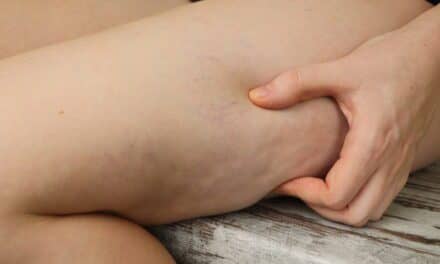Cosmetic dermatology is hot, hot, hot!
This was the main vibe at the recent American Academy of Dermatology (AAD) meeting in San Diego where there was lots of pop and lots of circumstance on the exhibit floor.
If we needed another indicator that the economy was improving, there would be no reason to look any further than the 2012 AAD expo.
In recent years, many industry meetings and exhibit halls have been bare bones. The days of elaborate booths, celebrity guest stars and pricey give-always were gone, but not forgotten…
Sure, the AAD meeting has always had more pizzazz than some of the others, but 2012 felt like a return to glory for the field of dermatology and those who support it. Walking through the exhibit floor was akin to walking through the cosmetic section at Bloomindales or another high-end department store. Each booth was better and brighter than the one before it.
At Clinique, legions of doctors and physician assistants were getting full-on makeovers. There were Disney Land-style lines enter the Aveeno, Curel and Neutrogena booths.
Other hot-ticket stations included Syneron’s suite, which showcased a host of new technologies including evolastin and elure. Reps from Leo Pharma held court to discuss their new drug for acitinic keratosis, Picato (Ingenol mebutate). ZO Medical introduced the community to their new line at a lavish Saturday evening reception at San Diego’s Oceanaire restaurant. (I have been to lesser weddings. Well that may be an overstatement, but I have definitely been to lesser rehearsal dinners.)
A lot of companies also choose to throw their hat into the non-invasive body contouring rink at the meeting. Cutera, Inc. introduced the truSculpt body contouring system, which uses non-invasive radio frequency treatment for body sculpting. Pollogen and Lumiere Medical unveiled Apollo, powered by TriPollar. (This technology, which uses radiofrequency energy, is FDA-cleared for smoothing mild to moderate facial wrinkles, but used off-label for body contouring. )
There was also lots of splash about excessive sweating and its treatments at the meeting – including the use of Ulthera and Miradry.
The only somewhat desolate booth belonged to Merz. Surely, their aesthetic product line would have taken center stage at the AAD had Allergan not hit them with an injection blocking then from selling their Botox rival Xeomin to the facial aesthetic community for 10 months.
Exhibits aside, the meeting also generated a lot of coverage in the lay press…
Hot topics and presentations included:
Psoriasis and systemic diseases go hand-in-hand
Joel M. Gelfand, MD, an assistant professor of dermatology and epidemiology at the University of Pennsylvania Perelman School of Medicine in Philadelphia, discussed the link between psoriasis and other medical conditions including obesity, high cholesterol, cardiovascular disease and metabolic syndrome.
Music to your skin?
Musicians are at increased risk for contact dermatitis on their hands and face. For example, musicians who play the flute, trombone, trumpet, tuba may experience lip swelling from forcing air through the mouthpieces, or contact dermatitis from metals found in the instruments — to name a few risks.
Jury still out on lasers to treat hair loss, nail fungus and cellulite
Dermatologists cautioned that more data are needed before these new treatments can be recommended, but these developments could lead to even better treatment options in the future. “It is very important for consumers to understand that there is currently very limited evidence for all of these new laser and light therapies for hair loss, nail fungus and cellulite. It is possible that they could pursue a treatment and see no improvement,” says Molly Wanner, MD, an instructor at Harvard Medical School and dermatologist at Massachusetts General Hospital in Boston, in a press release.
African-American Hair Care
Raechele Cochran Gathers, MD, a senior physician at the Multi-Cultural Dermatology Center of Henry Ford Hospital department of dermatology in Detroit, educated AAD members on African-American hair and its care. More than half of African-American women will cite thinning hair or hair loss as their top hair care concern. One of the main culprits? Hairstyles. They can lead to central centrifugal cicatricial alopecia (CCCA). If not treated early, CCCA can be disfiguring and permanent.


